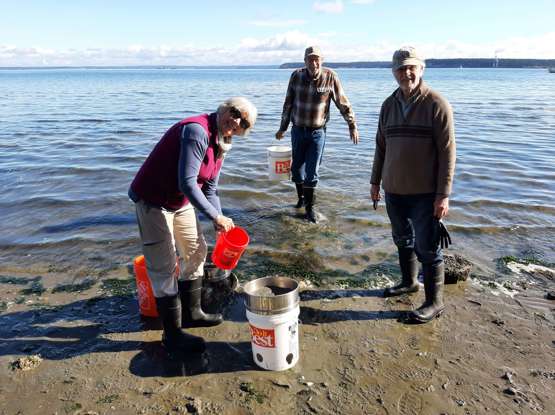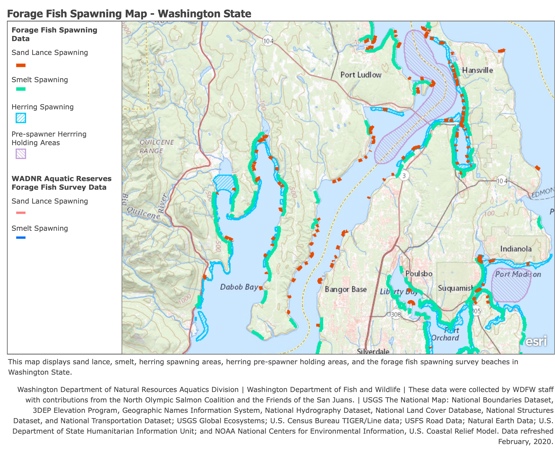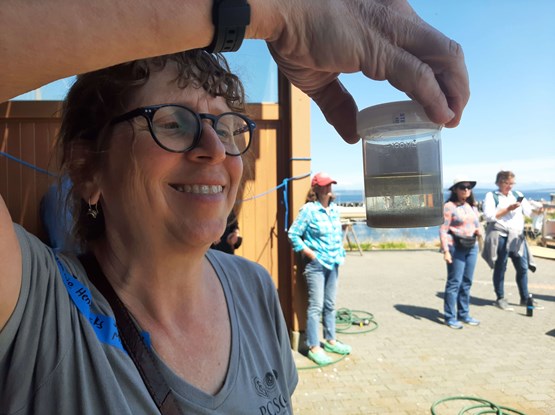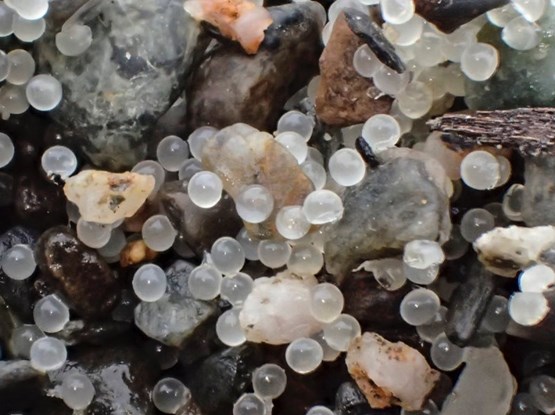
Where does the MRC monitor?
Jefferson MRC volunteers monitor three sites for forage fish spawning activity:
- a shoreline restoration site at Fort Townsend State Park, in partnership with Point No Point Treaty Council biologists
- an index site in Dabob Bay, in partnership with WDFW
Beach samples are collected monthly, processed and analyzed. Both sand lance and surf smelt eggs have been found across these sites during the late fall and winter months. This long-term effort helps fill data gaps about population dynamics and response to restoration efforts.
The MRC previously monitored Adelma Beach as an index site for about 6.5 years (11/2016 - 6/2023), documenting sand lance and surf smelt spawning typically in the fall and winter months.


